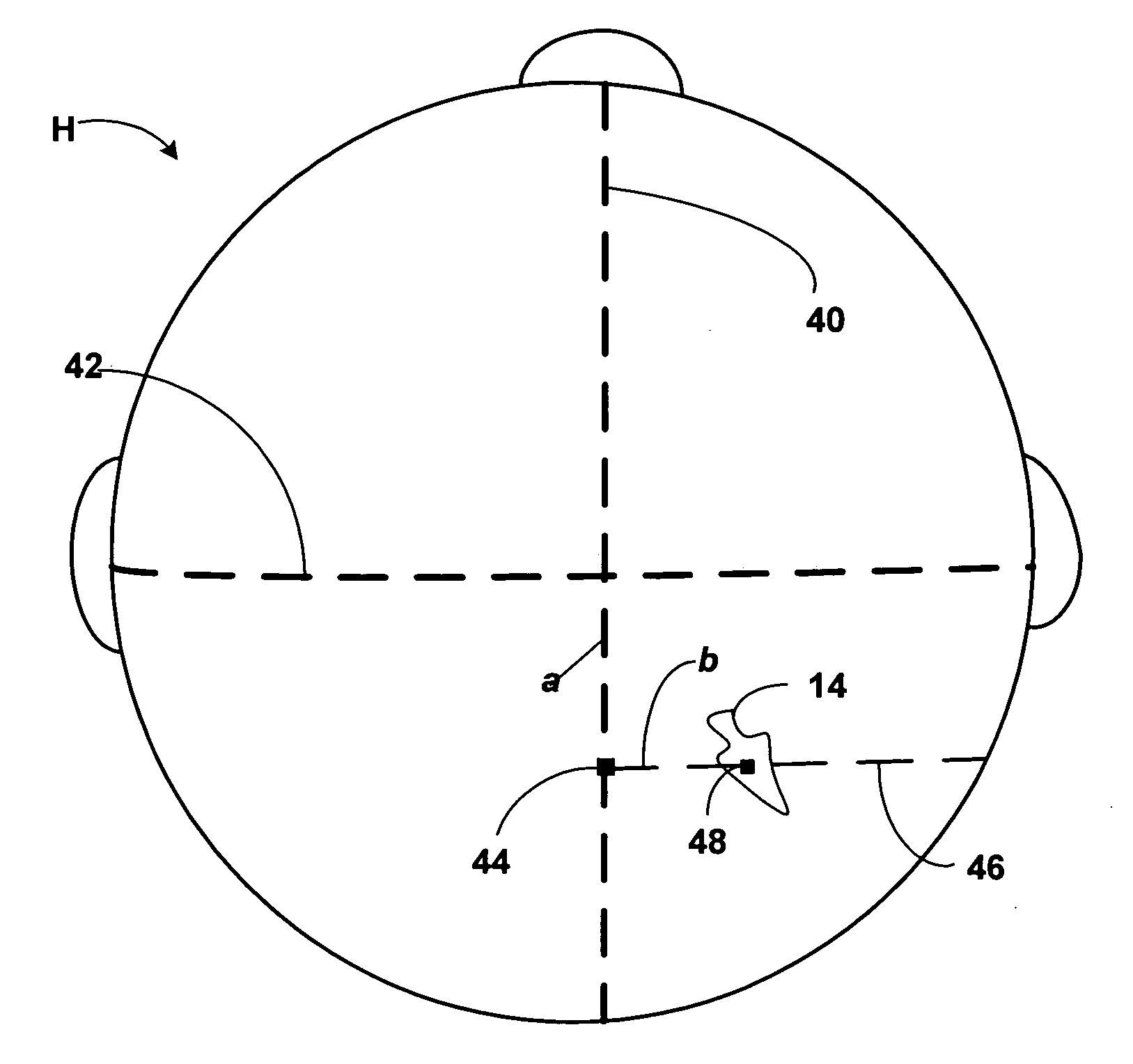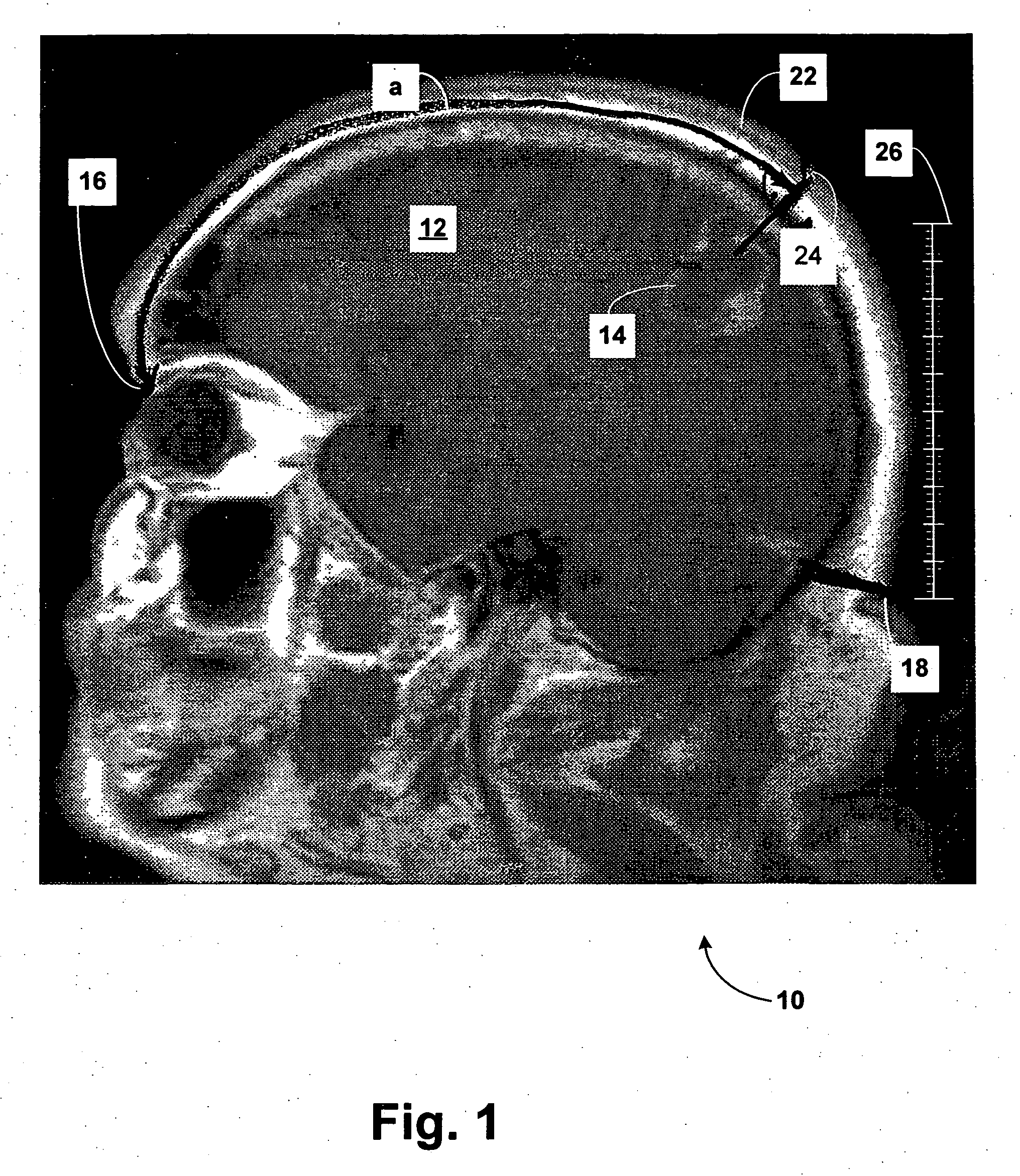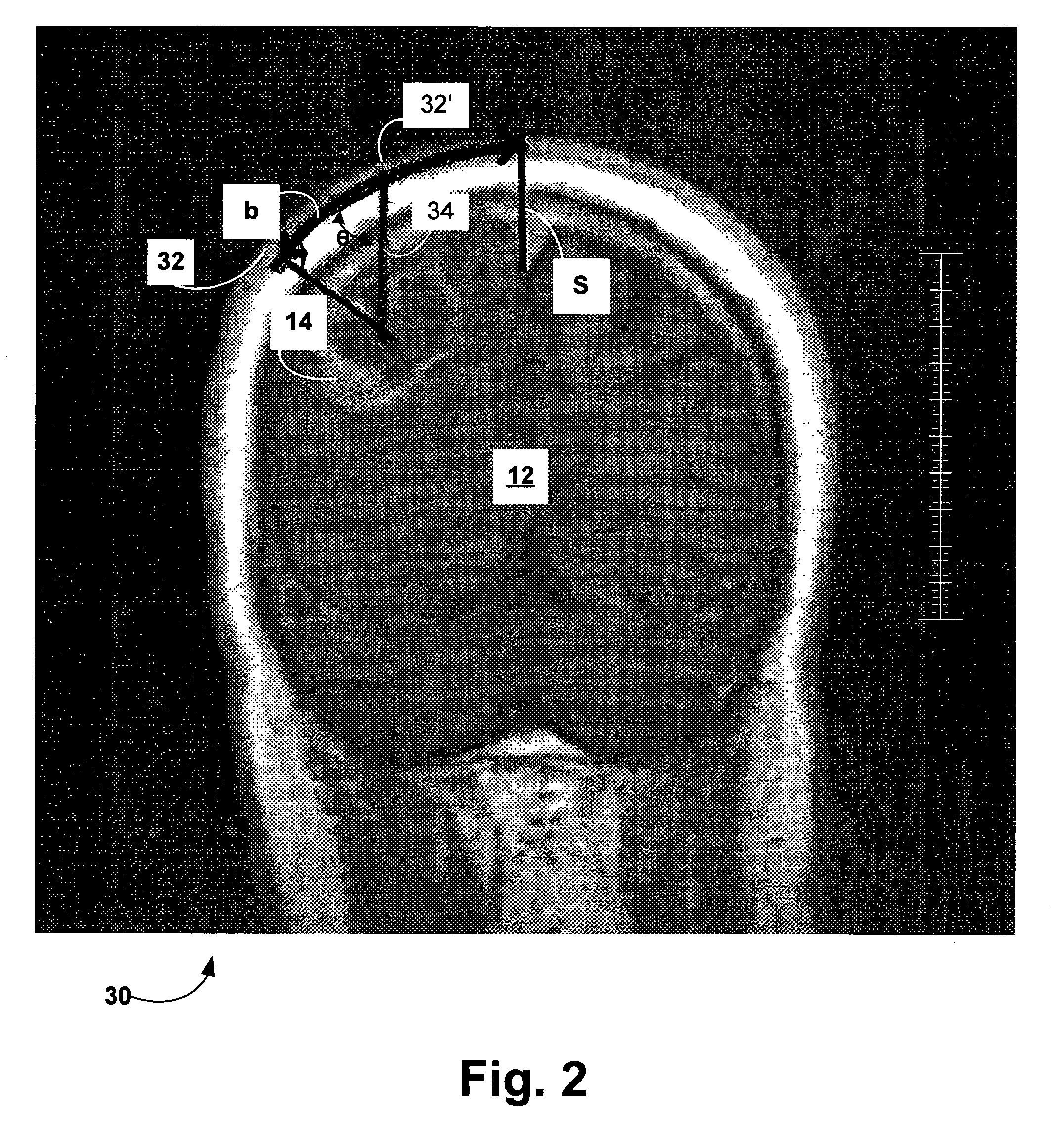Method for locating brain lesion
a brain lesion and brain tissue technology, applied in the field of brain lesion locating methods, can solve the problems of time-consuming stereotaxi, doubling the operating room time, and not being user-friendly,
- Summary
- Abstract
- Description
- Claims
- Application Information
AI Technical Summary
Problems solved by technology
Method used
Image
Examples
Embodiment Construction
[0012] As explained above, a surgeon utilizes a brain scan image to locate a brain lesion and to plan the operation to treat it. In the operating room, he transfers distance measurements derived directly from the brain scan onto the patient's cranium, thereby establishing the appropriate location and orientation of the bone flap.
[0013]FIG. 1 is a saggital MRI 10 of a patient's head showing the brain which has a lesion 14. The figure also shows the patient's nasion 16 (the recess above the nose) and inion 18 (the recess at the base of the skull). As may be seen, MRI 10 has a scale 26, which is typical. The scale 26 may be in the centimeters (large gradations), indicating the length of a centimeter on the patient's head.
[0014] As an initial step, the surgeon measures along the surface of the cranium 22 the distance a, the distance measured on the MRI from the nasion 16 to a point overlying the center of the lesion 14. This measurement ends at the point 24. The depth of the lesion in...
PUM
 Login to View More
Login to View More Abstract
Description
Claims
Application Information
 Login to View More
Login to View More - R&D
- Intellectual Property
- Life Sciences
- Materials
- Tech Scout
- Unparalleled Data Quality
- Higher Quality Content
- 60% Fewer Hallucinations
Browse by: Latest US Patents, China's latest patents, Technical Efficacy Thesaurus, Application Domain, Technology Topic, Popular Technical Reports.
© 2025 PatSnap. All rights reserved.Legal|Privacy policy|Modern Slavery Act Transparency Statement|Sitemap|About US| Contact US: help@patsnap.com



